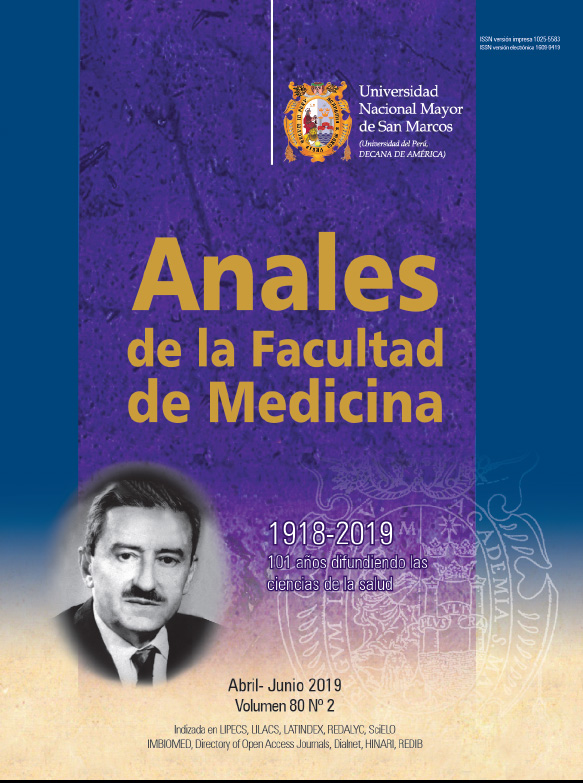Waiting time and quality of care in operated odontostomatology patients
DOI:
https://doi.org/10.15381/anales.802.16413Abstract
Introduction: Waiting times for elective surgery are indicators that legitimize socially public health services, if their situation is appropriate. Objective: To determine the relationship between the waiting time and the perception of the quality of care in Odontostomatology patients of a Social Security hospital. Methods: Satisfaction and dissatisfaction levels were determined by means of the modified SERVQUAL instrument, the results were correlated with the waiting time of more than 180 days and the quality of life; was affected, as well as which of these factors was most influenced about the degree of dissatisfaction. Results: The degree of satisfaction was 44%. The patients who waited more than 180 days presented 2.6 times more possibility of dissatisfaction, the affected patients presented 3.4 times more possibility of dissatisfaction. Finally, the affected patients presented 3.3 more possibilities of dissatisfaction, in relation to those who waited more than 180 days, which presented 2.5 more possibilities of dissatisfaction. Conclusion: There is an inverse relationship between waiting time and the perception of quality of care; In addition, the degree of dissatisfaction is associated, above all, with the impact of the quality of life rather than the waiting time itself.
Downloads
Published
Issue
Section
License
Copyright (c) 2019 Anales de la Facultad de Medicina

This work is licensed under a Creative Commons Attribution-NonCommercial-ShareAlike 4.0 International License.
Those authors who have publications with this magazine accept the following terms:
- Authors will retain their copyrights and guarantee the journal the right of first publication of their work, which will be simultaneously subject to Creative Commons Attribution License that allows third parties to share the work as long as its author and its first publication this magazine are indicated.
- Authors may adopt other non-exclusive licensing agreements for the distribution of the version of the published work (eg, deposit it in an institutional electronic file or publish it in a monographic volume) provided that the initial publication in this magazine is indicated.
- Authors are allowed and recommended to disseminate their work over the Internet (eg: in institutional telematic archives or on their website) before and during the submission process, which It can produce interesting exchanges and increase quotes from the published work. (See El efecto del acceso abierto ).















